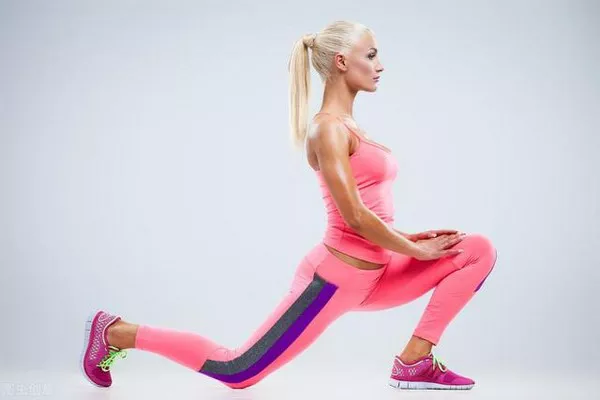Hot yoga, also known as Bikram yoga, is a popular form of yoga that involves performing a series of 26 postures in a room heated to around 105 degrees Fahrenheit. The practice was developed by Bikram Choudhury in the 1970s and has gained a following all over the world. While hot yoga can be a challenging and intense practice, it also offers numerous physical and mental benefits for practitioners. In this article, we will explore how hard hot yoga can be and what to expect from your first class.
What is Hot Yoga?
Before we dive into the intensity of hot yoga, let’s first understand what it is. Hot yoga is typically practiced in a heated room with a high level of humidity. This heat is meant to promote sweating and increase flexibility, as well as provide a detoxifying effect on the body. The 26 postures practiced in hot yoga are designed to work every part of the body, including muscles, ligaments, and organs, while also promoting mental focus and relaxation.
How Hard is Hot Yoga?
The difficulty level of hot yoga can vary greatly depending on several factors, including your fitness level, experience with yoga, and ability to handle heat. For some people, hot yoga can be an intense and challenging practice, while for others it may be more manageable. Here are some of the key factors that can impact how hard hot yoga is:
Heat and Humidity:
The temperature and humidity in the room can have a significant impact on the difficulty of hot yoga. The high heat and humidity can make it challenging to breathe and can cause you to sweat profusely, which can lead to dehydration if you’re not properly hydrated. If you’re someone who struggles with heat or humidity, hot yoga may be particularly challenging for you.
Fitness Level:
Your overall fitness level will also impact how hard hot yoga is. The practice involves holding poses for extended periods of time, which requires strength and endurance. If you’re new to yoga or have not exercised regularly, you may find hot yoga to be more difficult than someone who is already physically fit.
Experience with Yoga:
Your experience with yoga can also impact how hard hot yoga is. If you’re new to yoga, it can take some time to learn the postures and get comfortable with the practice. However, if you have a solid foundation in yoga and are familiar with the postures, hot yoga may be more manageable for you.
Injury or Health Conditions:
It’s important to note that hot yoga may not be appropriate for everyone, especially those with certain health conditions or injuries. The heat and intensity of the practice can put additional strain on the body, so it’s important to consult with a healthcare provider before starting hot yoga if you have any concerns.
Tips for Practicing Hot Yoga
If you’re interested in trying hot yoga but are concerned about the difficulty level, here are some tips to help you prepare:
Hydrate:
Proper hydration is essential for practicing hot yoga. Make sure to drink plenty of water before, during, and after your practice to avoid dehydration.
Dress Appropriately:
Wear comfortable, breathable clothing that allows you to move freely and absorb sweat. Avoid heavy materials or clothing that may restrict your movement.
Arrive Early:
Arriving early to class will give you time to acclimate to the heat and humidity in the room. You can also use this time to set up your mat and get comfortable with the space.
Listen to Your Body:
It’s important to listen to your body during hot yoga and go at your own pace. Don’t push yourself too hard, as this can lead to injury or exhaustion. Take breaks when you need them and focus on breathing deeply and relaxing.
Stay Consistent:
Like any form of exercise, consistency is key to seeing results from hot yoga. Try to practice regularly, even if it’s just once or twice a week, to build strength, flexibility, and mental focus.
Benefits of Hot Yoga
Despite its intensity, hot yoga offers numerous physical and mental benefits for practitioners. Here are some of the key benefits:
Increased Flexibility:
The heat and humidity in the room can help increase flexibility by loosening up muscles and ligaments. This can help improve overall mobility and range of motion.
Detoxification:
Sweating during hot yoga can help flush toxins from the body, promoting detoxification and improved circulation.
Stress Relief:
Hot yoga can be a great way to relieve stress and promote relaxation. The practice encourages mindfulness and deep breathing, which can help calm the mind and improve mental clarity.
Improved Cardiovascular Health:
Practicing hot yoga regularly can also have cardiovascular benefits, such as reducing blood pressure and improving heart health.
In Conclusion
The difficulty level of hot yoga can vary depending on several factors such as heat and humidity, fitness level, experience with yoga, and injury or health conditions. It is important to take the time to prepare and listen to your body during practice. Despite its intensity, hot yoga offers numerous physical and mental benefits such as increased flexibility, detoxification, stress relief, and improved cardiovascular health. With consistency and a willingness to push yourself within your own limits, hot yoga can be a challenging yet rewarding practice for anyone looking to improve their overall health and well-being.
Related topics:


